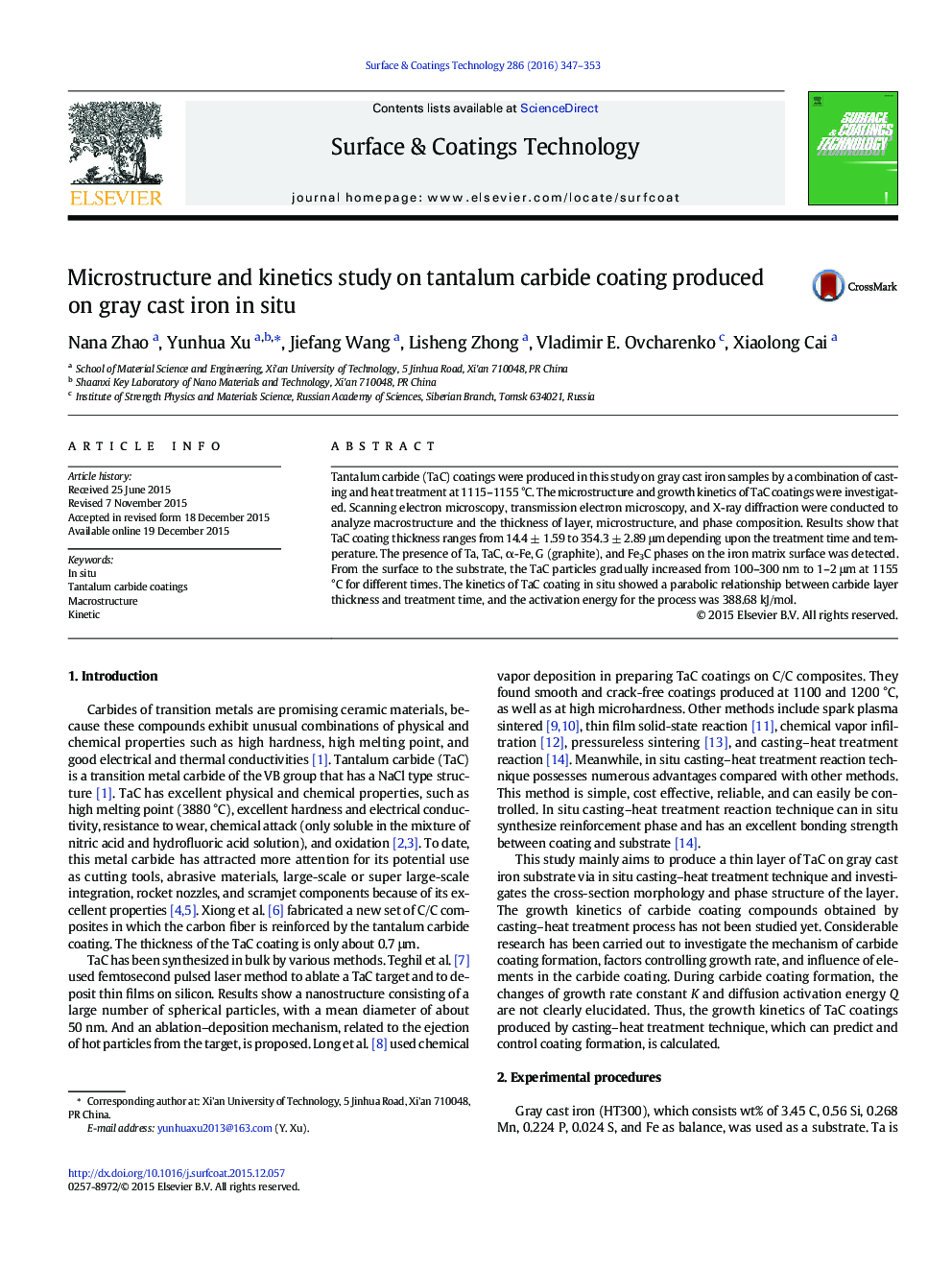| Article ID | Journal | Published Year | Pages | File Type |
|---|---|---|---|---|
| 1656796 | Surface and Coatings Technology | 2016 | 7 Pages |
•TaC coating was produced by in situ synthesis and combined casting–heat treatment.•TaC coating thickness depends upon the treatment time and temperature.•From the surface to the substrate, the TaC particles gradually increased at 1155 °C.•Thermodynamics, kinetics and atomic diffusion of coating formation were analyzed.•The Q with the value of 388.68 kJ/mol indicated that TaC coating does not scatter easily.
Tantalum carbide (TaC) coatings were produced in this study on gray cast iron samples by a combination of casting and heat treatment at 1115–1155 °C. The microstructure and growth kinetics of TaC coatings were investigated. Scanning electron microscopy, transmission electron microscopy, and X-ray diffraction were conducted to analyze macrostructure and the thickness of layer, microstructure, and phase composition. Results show that TaC coating thickness ranges from 14.4 ± 1.59 to 354.3 ± 2.89 μm depending upon the treatment time and temperature. The presence of Ta, TaC, α-Fe, G (graphite), and Fe3C phases on the iron matrix surface was detected. From the surface to the substrate, the TaC particles gradually increased from 100–300 nm to 1–2 μm at 1155 °C for different times. The kinetics of TaC coating in situ showed a parabolic relationship between carbide layer thickness and treatment time, and the activation energy for the process was 388.68 kJ/mol.
